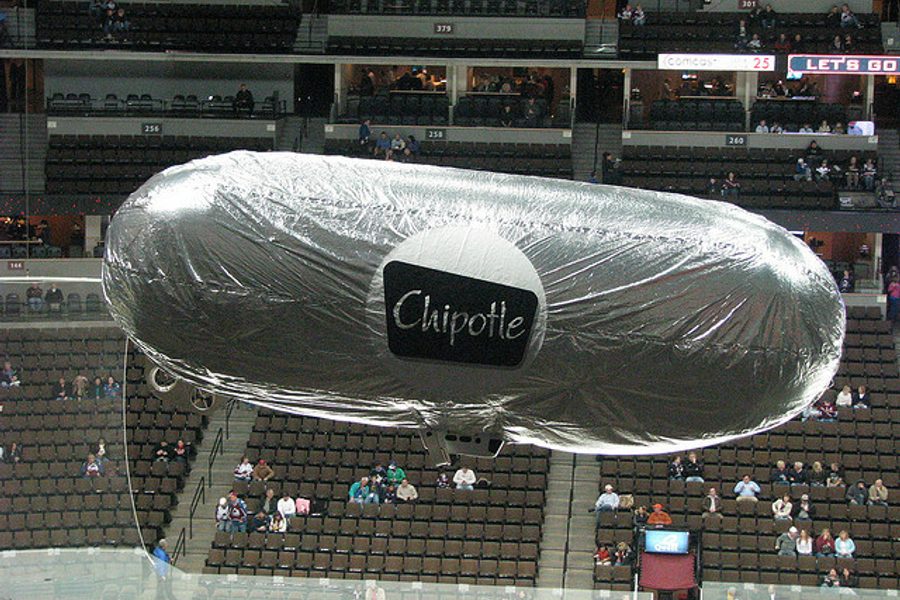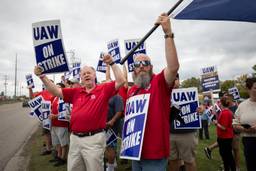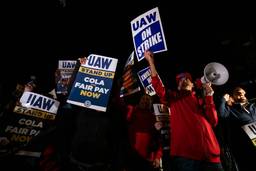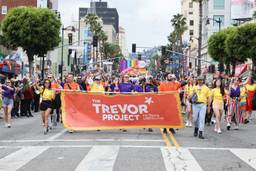
CHICAGO — The workers at Chipotle Mexican Grill on Chicago’s Magnificent Mile quickly and efficiently turn out “gourmet” burritos and tacos with organic and local ingredients for scores of shoppers, tourists and businesspeople strolling this famously tony stretch of Michigan Avenue just north of the Chicago River. The popular chain prides itself on offering “food with integrity” and cultivates a hip, sustainable image.
But a report released December 4 by the groups Action Now and Standup Chicago! notes that the two co-CEOs of Chipotle, Steve Ells and Monty Moran, earned a combined $38.9 million in 2011 while Chipotle workers are almost all part-time employees who earn around $9 an hour. This, the report says, means the CEOs roughly earn in an hour what a Chicago Chipotle worker earns in a year.
Such a differential is not unique to Chipotle; it characterizes nearly all the 50-plus publicly traded retail and restaurant outlets in downtown Chicago that the report analyzes. Urban Outfitters CEO Glenn Senk, for example, made $28.9 million total in 2010; and retired McDonald’s CEO James Skinner received a $21 million departure package.
The report pegged average compensation packages for CEOs of the downtown Chicago outlets at $8.3 million in 2011, while the median wage for retail and restaurant workers at these businesses was $9 an hour. This means that the CEOs are earning about $4,000 an hour for a 40-hour week — more than 400 times what their typical employees earn.
The groups recommend raising the hourly wage for retail and restaurant workers in downtown Chicago to at least $15 an hour across the board. They say this would actually create 4,000 new jobs since various studies indicate the extra income earned by such low-wage workers would be reinvested in the local economy, spurring about $179 million annually in new economic activity.
The Workers Organizing Committee of Chicago, a relatively new alliance of retail and restaurant workers from more than 100 employers, has likewise launched a campaign called “Fight for 15” demanding downtown businesses pay at least $15 an hour for retail and restaurant jobs. Members marched amidst crowds of shoppers in downtown Chicago on Black Friday, and joined nationwide actions against Walmart.
While the report does not call for a specific mandate or government action, Standup Chicago! policy analyst and research coordinator Elizabeth Parisian told Working In These Times that a city ordinance or other governmental action is “a role that’s always there for the city council or city administration.” The report also calls for businesses to respect workers’ right to unionize, which would likely lead to wage and benefit gains.
While companies often argue that paying higher wages would make them uncompetitive and ultimately mean closures or layoffs, Parisian said the evidence indicates this is not the case, especially in thriving downtown Chicago. “Even if employers were to pass on the entirety of this cost to the consumer, it would only raise prices by 2.6%, a negligible amount that is unlikely to affect consumer spending patterns in any significant way,” the report says.
If Chicago were a country, the report says, its GDP would rank above Belgium, Switzerland and Poland. Restaurants and retail are among the most lucrative sectors in Chicago’s economy, accounting for $14.2 billion in 2011, with $4 billion of that coming from the downtown area that includes the Magnificent Mile.
The businesses studied for the report include relatively upscale clothing stores like The Gap, Bebe, Abercrombie & Fitch and Nordstrom; fast food or cafe chains including Burger King, Panera, Caribou Coffee and Wendy’s; and office, electronics or other retailers including Radio Shack, Staples and Target. The report singles out Macy’s department store, McDonald’s, Chipotle Mexican Grill and TJX Companies as downtown Chicago chains with ample profits and cash on hand, that employ thousands of low-wage workers.
The report says:
McDonald’s has increased profits from $4.3 billion in 2008 to $5.5 billion in 2011. TJX, owner of TJ Maxx and Marshall’s, saw profits rise in the same period from $881 million to $1.5 billion. Chipotle profits increased over that period from $78 million to $215 million. Meanwhile, the cost of raising all low wage workers in retail and food service downtown to $15 per hour is $103 million, a very small percentage of the billions going through the cash registers each year.
Chicago is home to 18 billionaires and scores of millionaires, while the percentage of people in poverty has grown each year recently, with almost a quarter of Chicagoans living in poverty in 2011. Child poverty is even worse — 36 percent of Chicago children were poor in 2011.
The report notes that 10 percent of Chicagoans are employed in retail and restaurant work, and the jobs tend to be part-time, meaning few or no benefits, little job security and highly erratic schedules. Though workers will likely put in full-time hours at holidays and other peak times, they are usually still not eligible for full-time benefits.
The growth of low wage jobs in Chicago mirrors the national picture since the economic crisis and the “economic recovery” that began in 2009. Nationwide, the report says, low wage jobs represented 21 percent of jobs lost during crisis, but 58 percent of jobs created during the recovery. That means an overall shift to low-wage from solid middle-class work. In Chicago, the proportion of low wage jobs has increased significantly since 2001, a jump from 23.8 percent to 31.2 percent of the total workforce.
The study debunks the idea that low-wage restaurant and retail workers are largely teens and young people who will soon transition out of those jobs. More than half of the city’s low-wage workers are older than 30, the report notes, and in general the workers are older and better educated than in the past. Also a majority of low-wage workers in Chicago are the sole providers for their family — 57 percent, compared to 46 percent a decade ago. With the state minimum wage at $8.25 an hour, it’s a chilling statistic.
Under the Self-Sufficiency Standard, a financial model widely used since its development in the 1990s, a single parent raising a single child would need to earn at least $17.24 in a full-time job to survive without government assistance. The report notes: “When the actual cost of living is not covered by wages paid, the employer is effectively shifting the actual cost of their products and services to the employee and to the public.”
Low-wage workers get stuck in a cycle where they struggle just to make ends meet and lack the resources to pursue training or education or move to another location in search of better opportunities. And since poverty is inextricably linked with higher rates of neighborhood violence, health risks and other debilitating and costly problems, these low-wage workers and the general public pay many hidden costs, including the taxpayer bills for police protection and public health care.
After the report’s release at a church in downtown Chicago, Parisian told Working In These Times she is hopeful that growing awareness of inequities will spur change in Chicago and beyond.
“We’re seeing more and more people comfortable identifying on a class basis and talking about these issues, more and more people are saying ‘I’m a member of the 99 percent,’” she said. “It’s amazing just in the past year-and-a-half to see what’s happened. There’s been a climate change in the city where groups feel much more able to protest, to do visible actions. We have some huge obstacles in the corporate power we face, but we’re also at the point where inequality has gotten so high, people are fed up. It’s either organize and speak out or see everything fall apart.”

I hope you found this article important. Before you leave, I want to ask you to consider supporting our work with a donation. In These Times needs readers like you to help sustain our mission. We don’t depend on—or want—corporate advertising or deep-pocketed billionaires to fund our journalism. We’re supported by you, the reader, so we can focus on covering the issues that matter most to the progressive movement without fear or compromise.
Our work isn’t hidden behind a paywall because of people like you who support our journalism. We want to keep it that way. If you value the work we do and the movements we cover, please consider donating to In These Times.
Kari Lydersen is a Chicago-based journalist, author and assistant professor at Northwestern University, where she leads the investigative specialization at the Medill School of Journalism, Media, Integrated Marketing Communications. Her books include Mayor 1%: Rahm Emanuel and the Rise of Chicago’s 99%.







